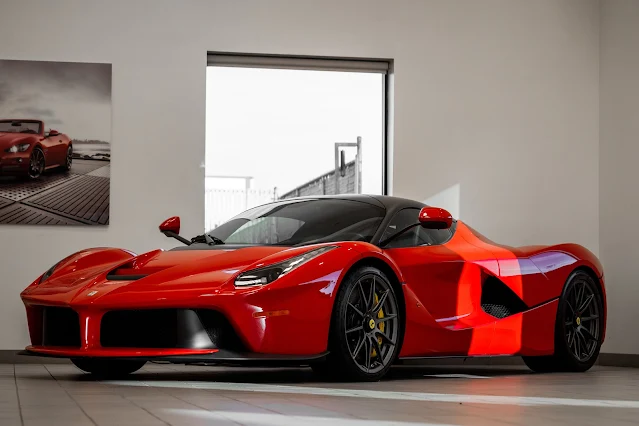Introduction - 1980 Ferrari
The 1980s was a transformative decade for Ferrari, as the renowned Italian automaker continued to push the boundaries of automotive engineering and design. During this era, '1980 Ferrari' released several iconic models that showcased their commitment to innovation, performance, and evolution. Let's explore the significant developments and memorable cars that defined Ferrari in the 1980s.
- 1980 Ferrari - The Ferrari 308 GTB/GTS: A Timeless Classic
The 1980s began with the continued production of the Ferrari 308 GTB and GTS models. Introduced in the mid-'70s, these cars epitomized the sleek and curvaceous design language of the era. Equipped with a mid-mounted V8 engine and offered in both coupe (GTB) and targa-top (GTS) variants, the 308 series became a symbol of attainable Ferrari performance for enthusiasts around the world.
1980 Ferrari - Photo by Joshua Koblin on Unsplash
- 1980 Ferrari - The Ferrari Testarossa: A Bold Statement
In 1984, Ferrari unveiled one of its most iconic models, the Testarossa. With its flamboyant design, featuring side strakes and a wide rear stance, the Testarossa made an unforgettable statement. Powered by a potent 4.9-liter flat-12 engine, the Testarossa boasted an impressive top speed and acceleration figures. This supercar became a poster child for the decade's automotive dreams and cemented Ferrari's reputation as a producer of exotic and exhilarating performance cars.
- 1980 Ferrari - The Ferrari F40: The Ultimate Supercar
In 1987, Ferrari introduced the F40, a car that would become a legend in the automotive world. Designed to celebrate Ferrari's 40th anniversary, the F40 was the last model to receive the personal approval of Enzo Ferrari himself. With a lightweight body constructed from carbon fiber and Kevlar, and a 2.9-liter twin-turbocharged V8 engine generating 471 horsepower, the F40 was the fastest and most powerful production car of its time. Its raw, unadulterated performance and razor-sharp handling set a new benchmark for supercars and solidified Ferrari's status as a leading manufacturer in the high-performance market.
- 1980 Ferrari - The Ferrari Mondial: A Family-Friendly Ferrari
In contrast to the high-performance sports cars, Ferrari also introduced the Mondial in the 1980s. Launched as a successor to the 308 GT4, the Mondial was a four-seater sports car with a V8 engine, targeting buyers seeking a more practical and family-friendly Ferrari experience. While not as iconic as some of its counterparts, the Mondial served as a testament to Ferrari's versatility and ability to cater to a broader range of customers.
- 1980 Ferrari - Technological Advancements and Motorsport Success
Throughout the 1980s, Ferrari continued to invest in technological advancements to improve the performance and handling of their cars. The use of computer-aided design (CAD) and wind tunnel testing allowed for more aerodynamic and efficient designs. Moreover, the Scuderia Ferrari Formula 1 team achieved significant success during this period, with notable drivers such as Gilles Villeneuve and later, Michele Alboreto.
Conclusion
The 1980s was a transformative decade for Ferrari, marked by the release of several iconic models that left an indelible mark on automotive history. From the timeless design of the 308 GTB/GTS to the flamboyant Ferrari Testarossa and the game-changing F40, Ferrari's offerings exemplified innovation, performance, and engineering excellence. The decade saw Ferrari continue to evolve and push the boundaries of automotive technology, making it one of the most revered and sought-after brands in the world of high-performance sports cars. Even today, the cars produced during this era continue to captivate the hearts of car enthusiasts and stand as a testament to Ferrari's enduring legacy.











